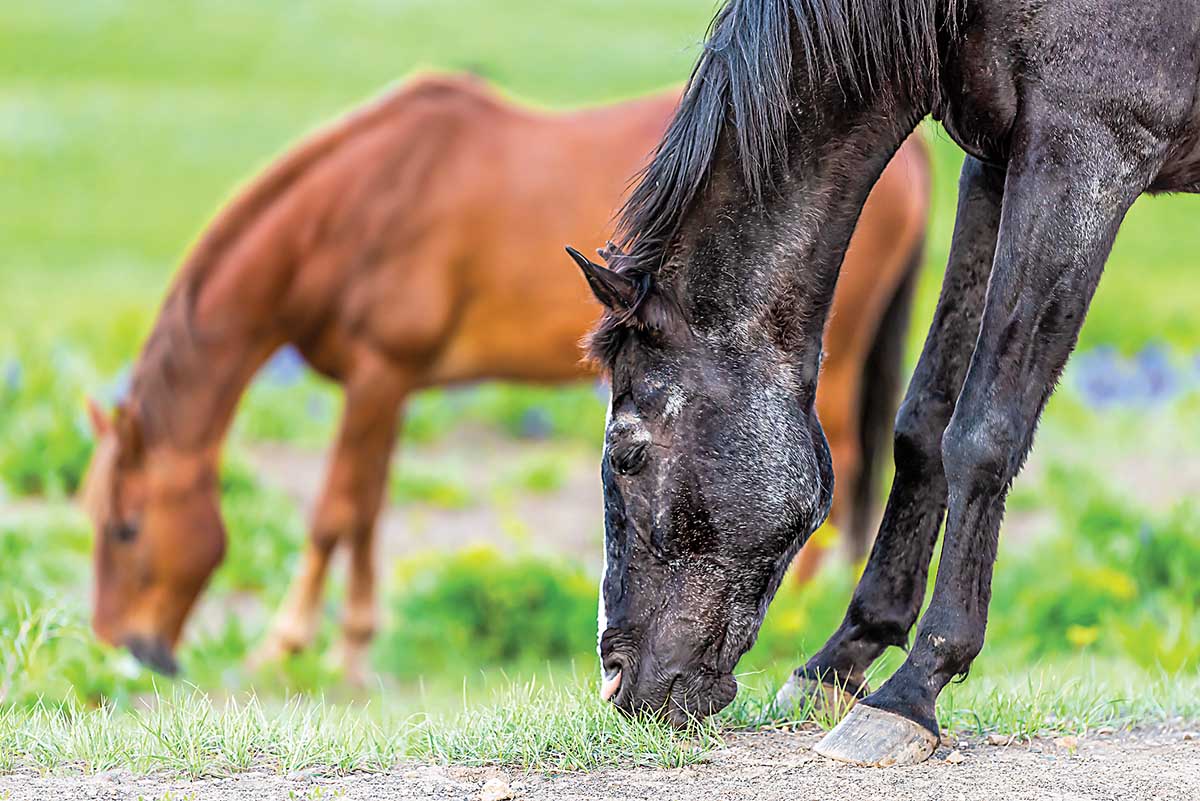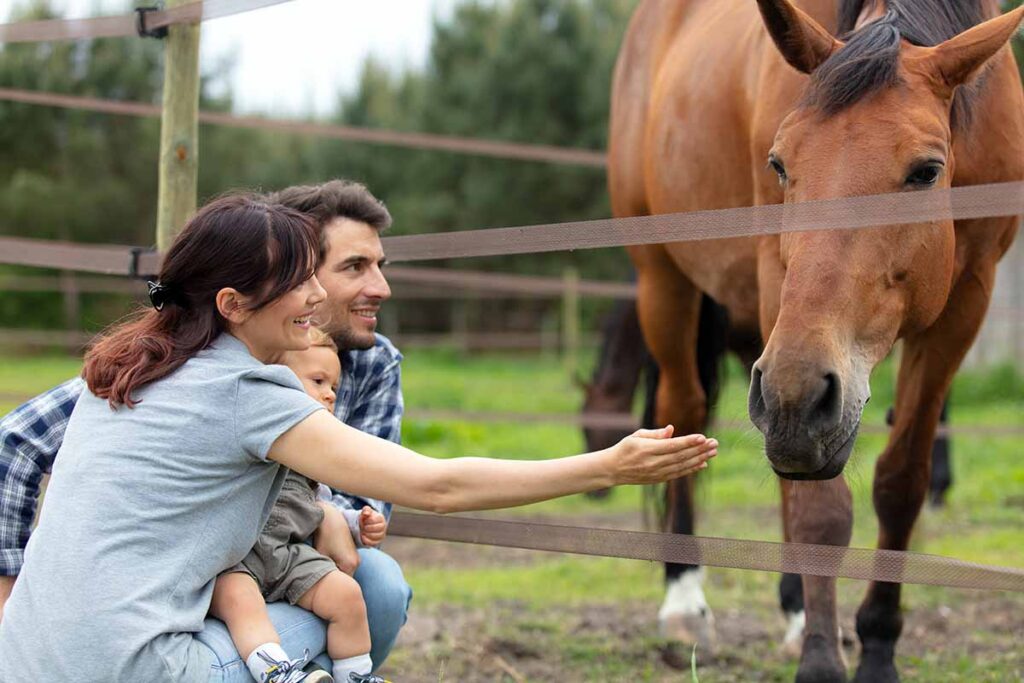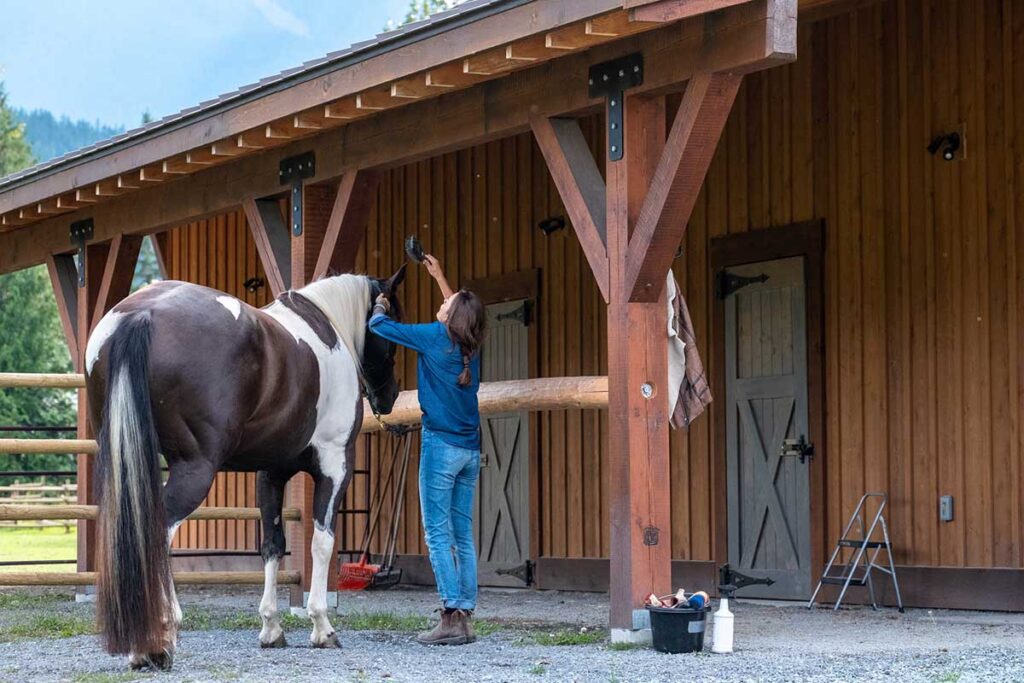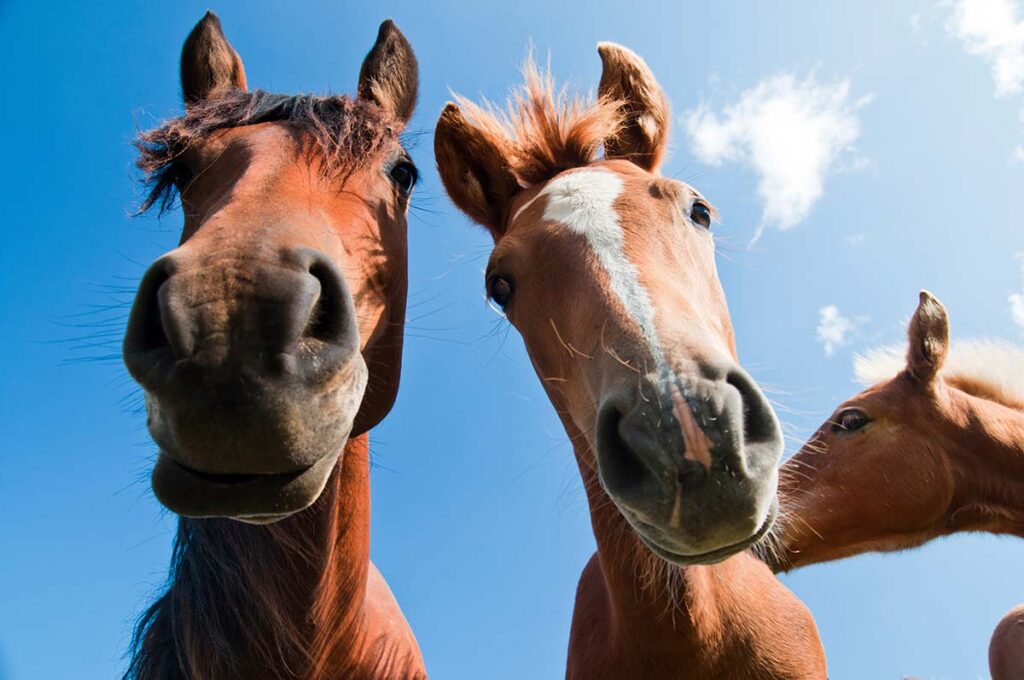Laminitis is an inflammatory disease that can cause severe pain and lameness in horses. It’s a term you do not want to hear your veterinarian say because, in the worst-case scenario, it can be life-threatening.
You might hear the words “laminitis” and “founder” used interchangeably to describe this hoof condition. However, laminitis typically describes the initial, acute onset of disease, and founder refers to the chronic, long-term phase.
Despite its severity, laminitis is not always visible from the outside. A horse with acute laminitis might have hooves that appear perfectly normal, masking the inflammation within. This makes early detection and prevention crucial in managing this condition. In this article, we’ll explore the causes, signs, and prevention strategies for laminitis, so you can best protect your horse from this painful condition.
Just the Basics

Here’s the basic information you need to know about laminitis in horses:
Definition: Inflammation of the laminae, the soft tissues that connect the coffin bone to the interior of the hoof capsule. In severe cases, the two structures might separate entirely, allowing the coffin bone to rotate or sink downward, away from the hoof wall. The result is the deformity called founder.
Causes: Metabolic disorders, such as equine metabolic syndrome and pituitary pars intermedia dysfunction (PPID, aka Cushing’s disease); systemic inflammatory events, such as those caused by a grain overload or an illness such as Potomac horse fever; mechanical stress or injury.
Signs: Extreme pain in the affected feet, shifting weight from one forefoot to the other, “sitting” back on the hindquarters to reduce weight on the forefeet, strong digital pulses, elevated respiratory rate, slight fever, and a generally uncomfortable look.
Treatment: Once signs of laminitis appear, damage to the hoof is already underway. Research suggests immersing a horse’s lower limbs in ice water when the first signs appear might help reduce the severity of an episode. A variety of medications can help reduce pain and inflammation. Various trimming and shoeing strategies can help support the hoof and limit or prevent rotation of the coffin bone.
Prognosis: Many horses can recover from a mild bout of laminitis, particularly if it did not progress to founder. When the coffin bone drops or rotates, however, recovery can be long and uncertain. Many horses are euthanatized because of the pain associated with laminitis.
How To Prevent Laminitis in Horses
Knowing your horse’s risk status is the first step in preventing this devastating hoof condition. Over the past decade, research into the physiological processes that lead to laminitis has made it clear the disease usually doesn’t strike “out of the blue.” In fact, clear profiles are emerging of the individual traits and circumstances that increase susceptibility to laminitis. With this information, you can identify horses at risk and take specific steps to protect them.
Know your horse’s risk status. All horses need to be protected from laminitis, but some require more vigilance than others. The poster horse for high laminitis risk is an inactive and overweight easy keeper. Horses with insulin resistance—a condition in which liver and fat cells do not respond normally to insulin—are also at greater risk, as are those with Cushing’s disease, an endocrine disorder that leads to excess production of the hormone cortisol. And, of course, any horse that has had laminitis in the past is at a high risk for recurrence.
Limit his access to lush pasture. Most laminitis cases are so-called “pasture laminitis,” triggered by the sugars in grasses. Although lush spring pasture is most commonly associated with laminitis, research shows grass can contain high levels of fructan, the most dangerous sugar, at any time of year. However, turnout is important for any horse’s physical and mental health. So talk to your veterinarian about using a grazing muzzle to limit or prevent your horse’s grass intake. Or consider establishing a grass-free “dry lot” for your horse.
Restrict his intake of carbs and sugars. It’s not just pasture that can trigger laminitis: Sugars and starches in feed, treats, and even some hays can cause the disorder. If your horse is at risk, scrutinize his diet for excesses. Sweet and senior feeds can be high in sugar, but nearly every feed company offers alternative products formulated with laminitis prevention in mind. Also consider having each batch of the hay you purchase tested at a local agriculture laboratory. Finally, instead of offering apples and peppermints as treats, switch to celery or treats specifically formulated for horses on restricted diets.
Keep his weight in check. Obesity is a significant contributor to laminitis. Decreasing a horse’s weight typically requires dietary changes as well as regular exercise. Work with your veterinarian to formulate a weight-loss plan for your horse. Don’t be surprised if it includes drastic changes in his (and your) activity levels.
Identify and control pituitary pars intermedia dysfunction. An estimated 70% of horses over age 20 develop PPID, a pituitary gland malfunction that leads to hormonal imbalances. Signs of the disorder include a persistent hair coat, excessive thirst, muscle wasting, and general lethargy. Diagnostic blood tests for PPID are available but aren’t reliable at certain times of the year. As a diagnostic alternative, your veterinarian might recommend simply beginning treatment and looking for improvement. PPID can be controlled with the drug pergolide, which is sold for horses under the name Prascend.
Keep his feet in good shape. The structures of overgrown or unbalanced hooves may become so stressed that they cannot withstand even a minor laminitic episode. And neglect alone can also trigger mechanical laminitis, a structural failure that occurs without a systemic insult. Keep your horse on a regular farriery schedule.
What If Your Horse Shows Signs of Laminitis?
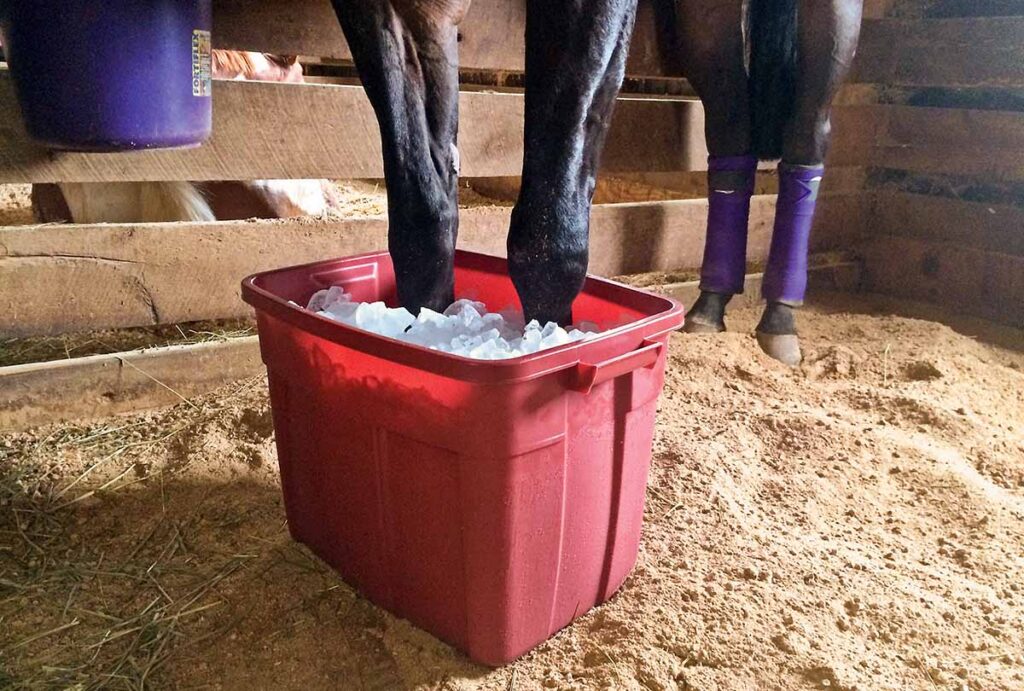
The earliest signs of laminitis are subtle—general discomfort, a strong pulse in the arteries (on the fetlock and pastern) supplying the hooves, rapid breathing, and/or slight fever—but noticing them can make the difference between dealing with an episode of laminitis or averting it.
If you suspect your horse is developing laminitis, do two things immediately: Call the veterinarian and get some ice. Research has shown that icing the hooves and lower limbs in the earliest stages of laminitis can help stop the process. However, it’s not a simple matter of placing a pack of frozen peas on a horse’s hooves. You’ll need to stand the horse in a water/ice slurry maintained between 40 and 50 degrees Fahrenheit (painfully cold to a bare hand) for 24 hours or longer.
If you have an at-risk horse, you might want to have some items on hand so you can commence icing in a hurry if need be. Or, at least have a plan for quickly getting those items.
The easiest way to keep a horse’s hooves cold enough is to apply boots specially designed for this purpose. But any sturdy bucket or heavy-duty plastic storage bin that’s large enough to immerse the entire lower limbs can be used to ice hooves, if you can get your horse to stand in it long enough.
You’ll need to replenish the ice in the slurry continually. This will likely require regular, round-the-clock runs to an ice supplier.
Take-Home Message
If you’ve learned anything about laminitis, it’s that this condition is extremely serious. Contact your veterinarian at the first signs of hoof pain. He or she will gather information about your horse and guide you through the next steps. With quick action, you can help give your horse the best possible chance for recovery.
This article originally ran on EQUUS.

